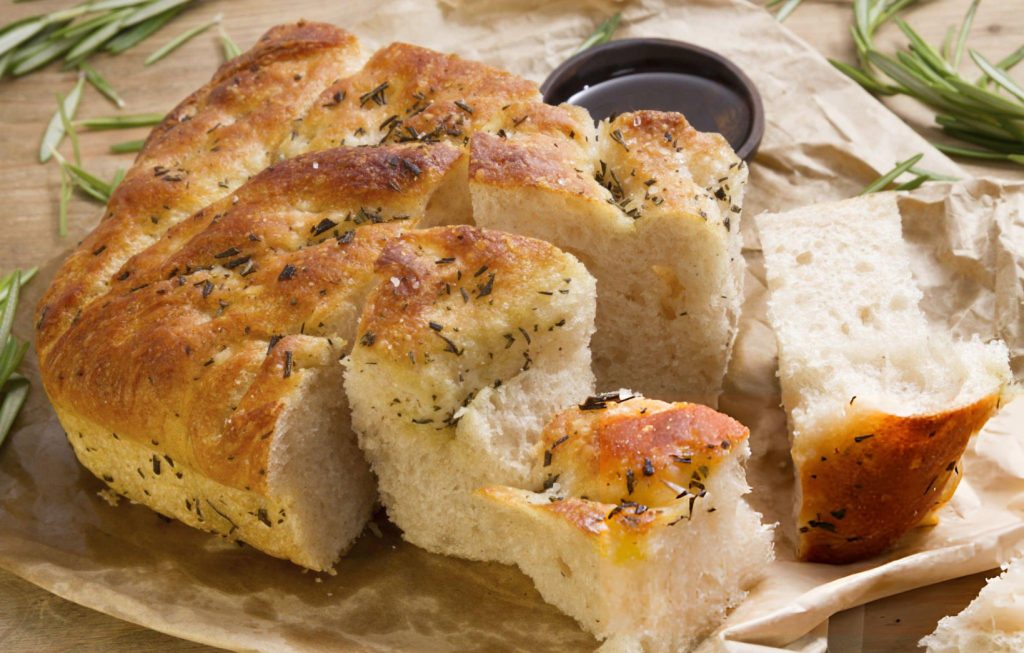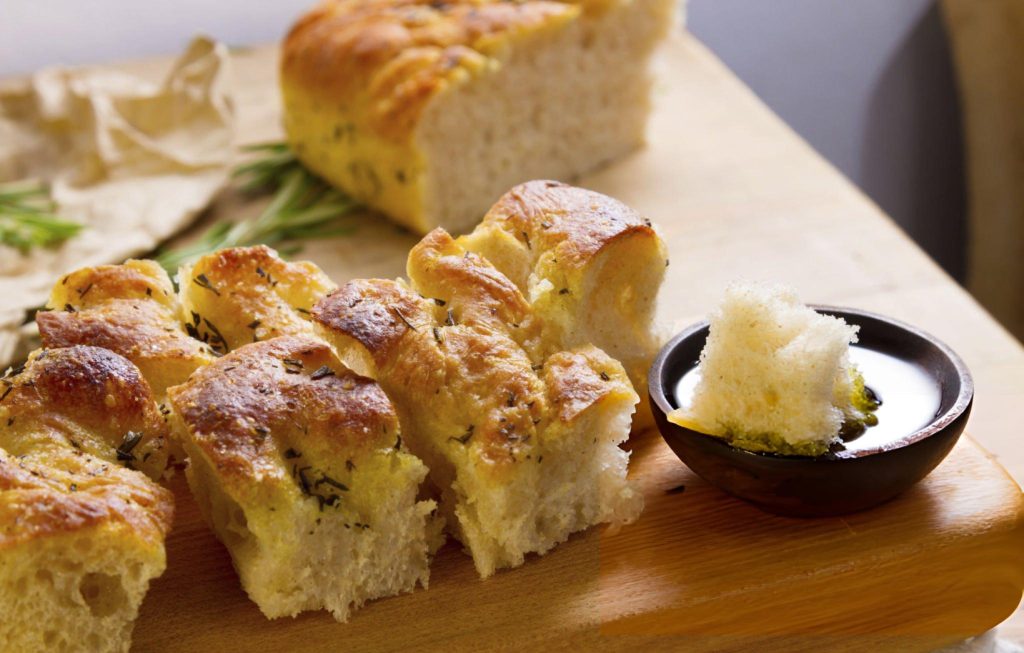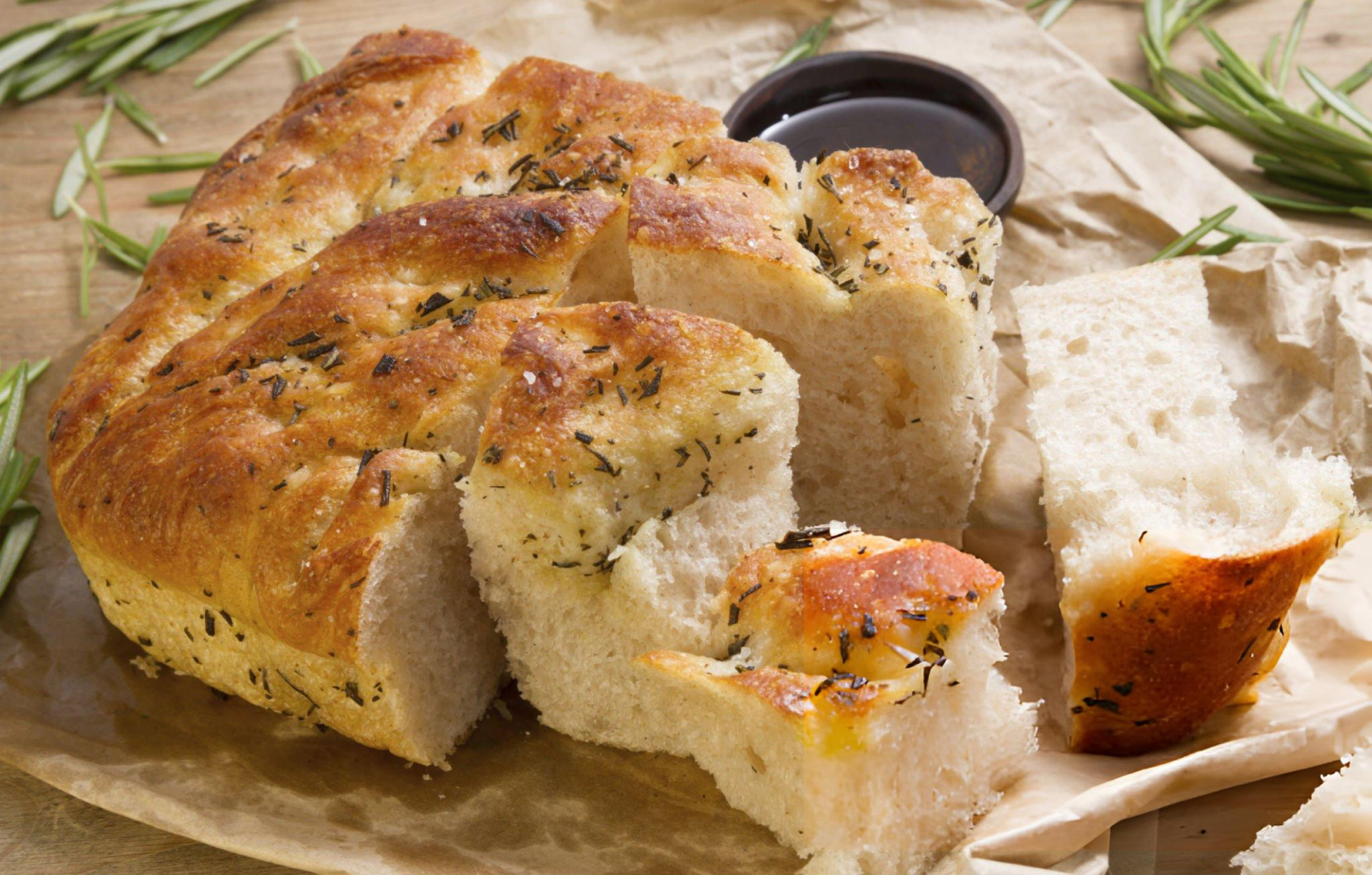Focaccia Bread Recipe
Focaccia, a staple in Italian cuisine, stands out for its delicate yet satisfying texture, which is both crisp on the outside and soft within. This versatile bread can be adapted to various flavors and occasions, making it a favorite for casual dinners and sophisticated gatherings alike. Whether enjoyed on its own, with a drizzle of olive oil, or as a base for more elaborate toppings, focaccia’s simplicity is what makes it truly unique. It requires minimal ingredients, yet the end result is a bread that is deeply flavorful and comforting.

Essential Ingredients and Their Roles
High-quality olive oil is the cornerstone of a good focaccia. Its rich, fruity flavor permeates the dough, giving the bread its characteristic taste and texture. Olive oil also helps create the crispy crust that contrasts so beautifully with the pillowy interior.
Yeast plays a crucial role in the dough, providing the lift that makes focaccia light and airy. It’s important to ensure that the yeast is active and healthy, as this will directly affect the bread’s rise and texture. A proper rise is what transforms a dense dough into the light, fluffy focaccia that we all love.
Sea salt and rosemary aren’t just for finishing; they infuse the bread with flavor. The salt enhances the dough’s natural flavors, while the rosemary adds a fragrant, earthy note that pairs perfectly with the olive oil. These ingredients may seem simple, but they elevate the bread into something extraordinary.
Step-by-Step Instructions for Perfect Focaccia
Creating focaccia is a process that requires attention to detail, but the results are well worth it. Start by combining warm water with a touch of sugar to feed the yeast, ensuring it becomes active. This mixture needs to rest until the yeast begins to foam, signaling that it’s ready to work its magic on the dough.
Once the yeast is activated, mix it with flour and sea salt to form a dough. This dough will initially be shaggy and rough, but as you mix it, the gluten strands will develop, making it more elastic. It’s essential to allow the dough to be sticky – resist the urge to add more flour, as this stickiness is key to the bread’s light texture.
After the dough has risen, it’s transferred to a generously oiled baking dish. The oil not only prevents sticking but also contributes to the crispy crust that’s so characteristic of focaccia. As you press the dough into the pan, take care to stretch it gently, allowing it to fill the dish without tearing.
The final step before baking involves creating the signature indentations in the dough. These dimples not only give focaccia its distinctive appearance but also help to evenly distribute the olive oil across the surface, ensuring that every bite is richly flavored.
Recipe Tips & Frequently Asked Questions
How to adjust the recipe for different flavors:
Incorporate ingredients like garlic or olives into the dough for added flavor. You can also experiment with different herbs, such as thyme or oregano, to customize the focaccia to your taste.
Tips for achieving a crispy crust while keeping the inside soft:
Ensure that your oven is fully preheated before baking. This initial burst of heat helps to set the crust quickly, locking in moisture and keeping the interior tender.
Common mistakes to avoid:
Don’t rush the rising process. The dough needs ample time to develop its structure, which results in a better rise and texture. Also, be cautious with the flour – adding too much will make the bread dense and heavy.
Can I use whole wheat flour instead of all-purpose flour?
Yes, you can substitute whole wheat flour, but be aware that the texture will be denser, and the rise might be slightly less. You may also need to increase the hydration slightly to compensate for the higher absorbency of whole wheat flour.
How do I store focaccia to keep it fresh?
Store focaccia at room temperature, wrapped in parchment or a clean kitchen towel, to maintain its crust. Avoid airtight containers, as they can make the bread soggy. For longer storage, freeze the focaccia in slices, and reheat as needed.
What’s the best way to reheat focaccia?
Reheat focaccia in a preheated oven at 350°F for about 10 minutes, or until warmed through. This method helps to restore the crust’s crispiness.

What to Serve With This Recipe
Focaccia is wonderfully versatile and pairs well with a variety of dishes. Serve it alongside a hearty soup, where its crisp crust can soak up rich broths without becoming soggy. It’s also an excellent accompaniment to fresh salads, particularly those with bright, acidic dressings that contrast with the bread’s richness.
For a more substantial meal, focaccia can be used as a base for sandwiches, particularly those featuring robust fillings like roasted vegetables, cured meats, or cheese. Its flavor is also enhanced when dipped in olive oil or balsamic vinegar, making it a simple yet satisfying appetizer.
Leftover focaccia can be repurposed in creative ways. Toast it to create crunchy croutons for salads or soups, or use it as a base for a quick pizza by adding toppings and baking it until the cheese is melted and bubbly.
Variations and Add-Ons
Focaccia is a blank canvas, perfect for experimenting with different flavors and toppings. For a savory twist, try adding sun-dried tomatoes, olives, or caramelized onions to the dough. These additions can be kneaded in before the first rise, or sprinkled on top just before baking.
Regional variations of focaccia offer even more inspiration. In Liguria, for example, focaccia is often topped with a simple brine of water and salt, creating a distinctly salty crust. Tuscan focaccia, on the other hand, might include grapes or other fruits, blending sweet and savory flavors in an unexpected way.
If you’re in the mood for something sweet, consider making a dessert focaccia. Swap out the rosemary and salt for sugar and cinnamon, and top with sliced fruits like apples or pears. The result is a bread that’s just as satisfying for dessert as it is for dinner.
Serving Suggestions
Focaccia is a delightful bread that encourages creativity and experimentation. Whether you stick to the classic rosemary and sea salt or venture into more adventurous territory with different toppings, there’s no limit to the ways you can make this recipe your own.
Serve focaccia fresh out of the oven for the best experience, when its crust is at its crispiest, and the interior is soft and fragrant. Pair it with your favorite dishes, or enjoy it on its own as a simple, yet indulgent treat.
Don’t be afraid to experiment with the recipe – add your favorite toppings, try different flours, or even shape the dough into rolls or flatbreads. Focaccia is forgiving and flexible, making it a great recipe for both novice bakers and seasoned pros alike.

Ingredients
- 500 grams all-purpose flour (approximately 4 cups)
- 2 teaspoons sea salt
- 1¾ cups warm water, heated between 105° and 115°F
- 2 teaspoons cane sugar
- 1 (¼-ounce) packet of active dry yeast (equivalent to 2¼ teaspoons)
- 6 tablespoons extra-virgin olive oil, with extra for handling
- Flaky sea salt, optional, for finishing
- Freshly chopped rosemary, optional, for garnish
Instructions
In the bowl of a stand mixer, equipped with a dough hook, combine the warm water and sugar. Sprinkle the yeast over the mixture, giving it another gentle stir. Allow the mixture to rest for 5 minutes, during which time the yeast should begin to foam. If you don’t see any foam, discard this mixture and start over with fresh yeast.
Add the flour and sea salt to the foamy yeast mixture. Start mixing on low speed until a rough dough begins to form. Gradually increase the mixer’s speed to medium, letting it work the dough for 5 minutes. You should see the dough becoming stretchy and sticky, starting to cling to the sides of the bowl.
Take a large mixing bowl and brush it generously with 2 tablespoons of the olive oil. Transfer the sticky dough into this oiled bowl, using a spatula to help guide it from the mixer bowl. The dough will be too sticky to handle directly. Gently use your fingers to spread any oil collecting on the edges of the bowl over the surface of the dough. Cover the bowl with plastic wrap or a damp cloth and leave it in a warm place to rise until it doubles in size, which should take between 1 to 1½ hours.
Prepare a 9×13-inch baking dish by brushing it with another 2 tablespoons of olive oil. Once the dough has risen, remove the covering and lightly coat your hands with olive oil. Carefully slide your hand beneath the dough’s edge, folding it inward. Continue folding the dough inwards around its circumference until it forms a rough ball that can be lifted from the bowl.
Place the dough into the prepared baking dish, ensuring it’s coated with oil on all sides. Gently press the dough out towards the edges of the pan. If the dough pulls back, let it rest for a few moments before pressing it out again. Cover the pan with plastic wrap or a damp towel and allow the dough to rise again for about 45 minutes, until it has doubled in size. Preheat your oven to 425°F about 30 minutes into this rise.
Once the dough has risen, remove the covering. Drizzle the remaining 2 tablespoons of olive oil over the dough’s surface. Lightly coat your fingers with oil, then press them into the dough to create indentations across the surface, making sure to press all the way down to the pan. If desired, sprinkle with flaky sea salt and freshly chopped rosemary. Bake in the preheated oven for 20 to 30 minutes, until the focaccia is golden brown.

Focaccia Bread Recipe
Ingredients
- 500 grams all-purpose flour approximately 4 cups
- 2 teaspoons sea salt
- 1¾ cups warm water heated between 105° and 115°F
- 2 teaspoons cane sugar
- 1 ¼-ounce packet of active dry yeast (equivalent to 2¼ teaspoons)
- 6 tablespoons extra-virgin olive oil with extra for handling
- Flaky sea salt optional, for finishing
- Freshly chopped rosemary optional, for garnish
Instructions
- In the bowl of a stand mixer, equipped with a dough hook, combine the warm water and sugar. Sprinkle the yeast over the mixture, giving it another gentle stir. Allow the mixture to rest for 5 minutes, during which time the yeast should begin to foam. If you don’t see any foam, discard this mixture and start over with fresh yeast.
- Add the flour and sea salt to the foamy yeast mixture. Start mixing on low speed until a rough dough begins to form. Gradually increase the mixer’s speed to medium, letting it work the dough for 5 minutes. You should see the dough becoming stretchy and sticky, starting to cling to the sides of the bowl.
- Take a large mixing bowl and brush it generously with 2 tablespoons of the olive oil. Transfer the sticky dough into this oiled bowl, using a spatula to help guide it from the mixer bowl. The dough will be too sticky to handle directly. Gently use your fingers to spread any oil collecting on the edges of the bowl over the surface of the dough. Cover the bowl with plastic wrap or a damp cloth and leave it in a warm place to rise until it doubles in size, which should take between 1 to 1½ hours.
- Prepare a 9×13-inch baking dish by brushing it with another 2 tablespoons of olive oil. Once the dough has risen, remove the covering and lightly coat your hands with olive oil. Carefully slide your hand beneath the dough’s edge, folding it inward. Continue folding the dough inwards around its circumference until it forms a rough ball that can be lifted from the bowl.
- Place the dough into the prepared baking dish, ensuring it’s coated with oil on all sides. Gently press the dough out towards the edges of the pan. If the dough pulls back, let it rest for a few moments before pressing it out again. Cover the pan with plastic wrap or a damp towel and allow the dough to rise again for about 45 minutes, until it has doubled in size. Preheat your oven to 425°F about 30 minutes into this rise.
- Once the dough has risen, remove the covering. Drizzle the remaining 2 tablespoons of olive oil over the dough’s surface. Lightly coat your fingers with oil, then press them into the dough to create indentations across the surface, making sure to press all the way down to the pan. If desired, sprinkle with flaky sea salt and freshly chopped rosemary. Bake in the preheated oven for 20 to 30 minutes, until the focaccia is golden brown.

